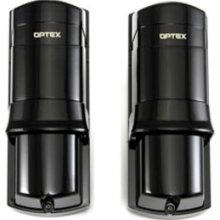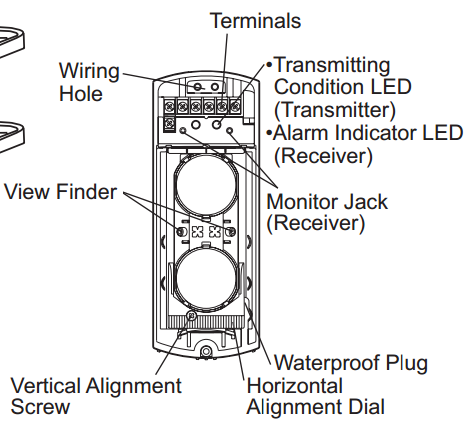How To Protect Your AC Unit From Copper Thieves
The price of copper has risen dramatically in recent years causing a huge increase in copper theft. AC units are the primary target of theft due to their accessibility. You can always have a metal cage installed around your AC unit, but that method is not too aesthetically pleasing. The best way to protect your unit is through perimeter protection using a couple of outdoor rated infra-red beams. Alarm companies will do this for you for a price, but you can do it yourself for a lot less.
The price of copper has risen dramatically in recent years causing a huge increase in copper theft. AC units are the primary target of theft due to their accessibility. You can always have a metal cage installed around your AC unit, but that method is not too aesthetically pleasing. The best way to protect your unit is through perimeter protection using a couple of outdoor rated infra-red beams. Alarm companies will do this for you for a price, but you can do it yourself for a lot less.

This is one set of the Optex AX-70TN Outdoor Beam. It consists of one transmitter and one receiver, both look identical with their covers in place.

Outer Wall Of House


R
R






T
T

The mounting post can be wood, pvc, or a standard fence post.
Outdoor Beam Wiring
Their wiring is pretty simple. Both the transmitter and receiver require a 12 volt dc power source, usually this is provided by the aux power output from the alarm control panel, but sometimes wiring issues make it easier to power some segments of a beam system from from separate 12 volt power supplies.
Their wiring is pretty simple. Both the transmitter and receiver require a 12 volt dc power source, usually this is provided by the aux power output from the alarm control panel, but sometimes wiring issues make it easier to power some segments of a beam system from from separate 12 volt power supplies.
Receiver Terminals
Transmitter Terminals





N
o
C
o
n
n
e
c
t
i
o
n
o
C
o
n
n
e
c
t
i
o
n
N
o
C
o
n
n
e
c
t
i
o
n
o
C
o
n
n
e
c
t
i
o
n
Z
o
n
e
I
n
p
u
t
o
n
e
I
n
p
u
t
Z
o
n
e
C
o
m
m
o
n
o
n
e
C
o
m
m
o
n
N
o
C
o
n
n
e
c
t
i
o
n
o
C
o
n
n
e
c
t
i
o
n
N
o
C
o
n
n
e
c
t
i
o
n
o
C
o
n
n
e
c
t
i
o
n
12 Volts DC
12 Volts DC
The Alarm terminals are the connection to the zone input at the alarm panel. These terminals are simply a normally closed relay that triggers when the IR beam is interrupted. Your alarm control panel may have end of line resistors enabled, if so you'll need a properly sized resistor inline with the circuit.
The Tamper terminals are a normally closed circuit that opens whenever the cover is removed from the unit. To make good use of them you'd need a separate 24 hour trouble zone assigned to them. The vast majority of alarm companies don't bother to use them so I left them un-connected on my diagram, but you could use them if you choose.
The Tamper terminals are a normally closed circuit that opens whenever the cover is removed from the unit. To make good use of them you'd need a separate 24 hour trouble zone assigned to them. The vast majority of alarm companies don't bother to use them so I left them un-connected on my diagram, but you could use them if you choose.
Wiring Multiple Beams On A Single Alarm Panel Zone
It's not unusual to have to put multiple beams on a single zone. Below is a diagram of a two beam zone.
It's not unusual to have to put multiple beams on a single zone. Below is a diagram of a two beam zone.





























Transmitter # 1
Receiver # 1
+12 Volts
- 12 Volts
Zone Common
Zone Input
- 12 Volts
Zone Common
Zone Input
Receiver # 2
Transmitter # 2
How To Align Outdoor Beams
There are two steps involved in aligning the Optex AX-70TN Beam
Step 1: Visually align both the transmitter and receiver using the mirror sights
There are two steps involved in aligning the Optex AX-70TN Beam
Step 1: Visually align both the transmitter and receiver using the mirror sights





The viewfinder is a sort of periscope that allows you to see exactly where the unit is pointed. There is a viewfinder on both sides for convenience but only one need be used. You'll need to close one eye and get the angle just right to be able to see the mirror inside, but once you get the hang of it it's a very useful feature. Both the transmitter and receiver need to be adjusted in this manner.
Step 2: Use a voltmeter to fine tune the alignment.



The monitor jack is two small holes in the face of the receiver. The holes are the same size as a typical voltmeter lead. You insert the positive voltmeter lead in one hole, the negative lead in the other (polarity doesn't really matter).
Set the voltmeter to DC volts, the output from the monitor jack will read 0 volts if there's no alignment, and move up to above 2.9 volts for excellent alignment. Anything above 2.3 volts is sufficient.
Note:
Set the voltmeter to DC volts, the output from the monitor jack will read 0 volts if there's no alignment, and move up to above 2.9 volts for excellent alignment. Anything above 2.3 volts is sufficient.
Note:
Any cheap voltmeter will do, you can buy a voltmeter at any automotive parts store for about $10.
Other Uses For Outdoor Beams
In the security field we use outdoor beams to protect everything from car lots to entire industrial complexes. Lots of people spend hundreds of dollars on driveway probes to detect visitors before they arrive at the door only to find that they don't detect motorcycles or pedestrians, they could've put in a single beam that covers their entire front yard for much less money. Heck, you can even use four beams to curtain off your house from intruders without having to deal with interior wiring at all.
In the security field we use outdoor beams to protect everything from car lots to entire industrial complexes. Lots of people spend hundreds of dollars on driveway probes to detect visitors before they arrive at the door only to find that they don't detect motorcycles or pedestrians, they could've put in a single beam that covers their entire front yard for much less money. Heck, you can even use four beams to curtain off your house from intruders without having to deal with interior wiring at all.